Using Azure Functions with SharePoint webhooks
Azure Functions offers an easy way to host your SharePoint webhooks: you can add your webhook C# or JavaScript code via the browser, and Azure takes care of the hosting and scaling of your function. This guide shows how to set up and use Azure Functions for your webhooks.
Create an Azure Function App
The first step you need to do is to create an Azure Function App, which is a special Azure Web App focused on hosting Azure Functions.
Navigate to https://portal.azure.com, search for function app. Select Function App from the search results.
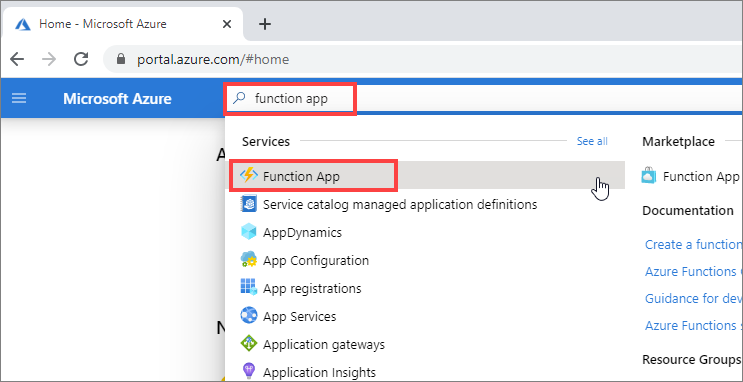
Click the Add option.
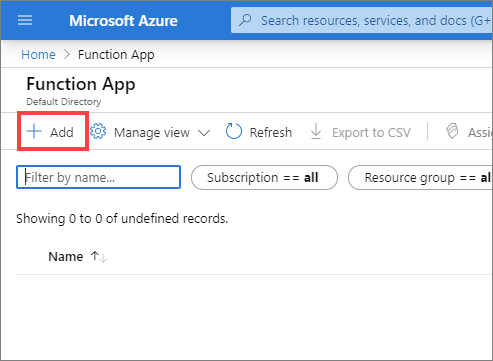
Complete the information needed to create the Function App, then click Review + create.
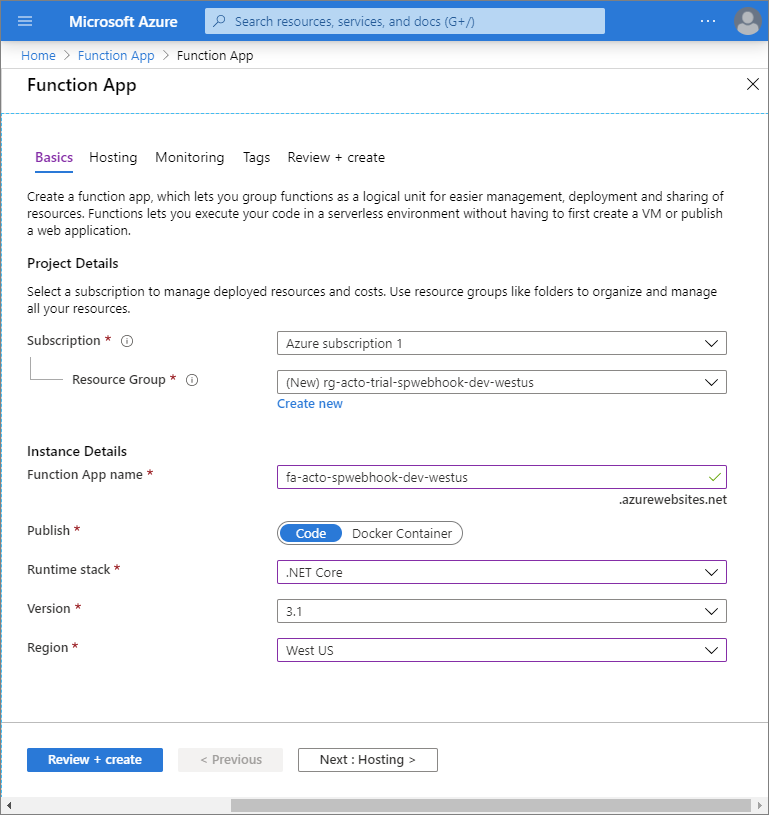
Click Create
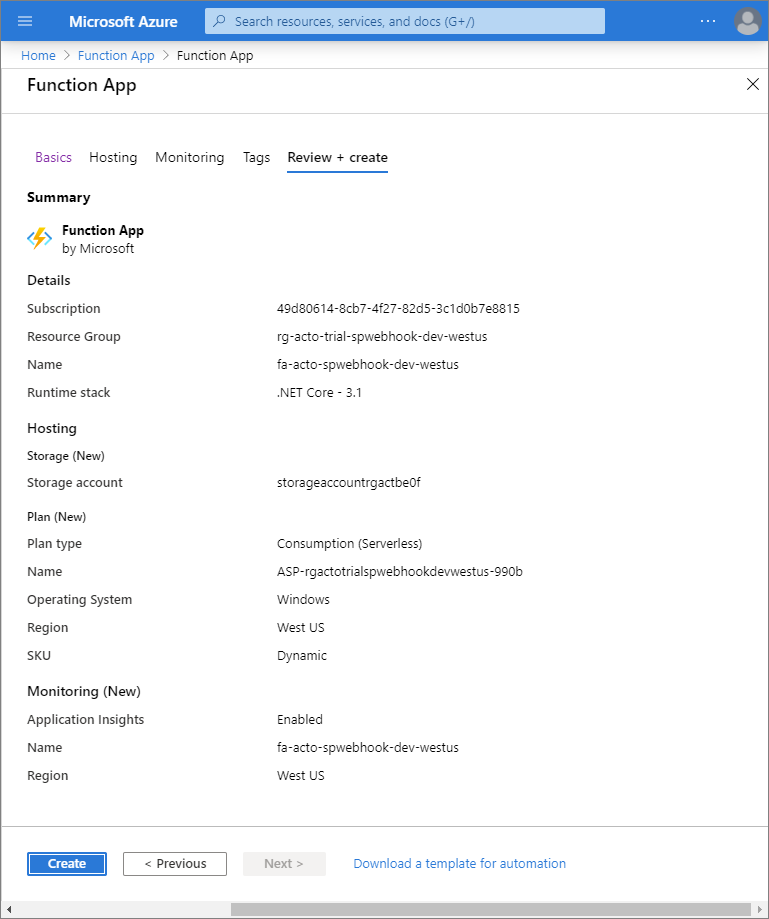
When the deployment is completed click Go to resource.
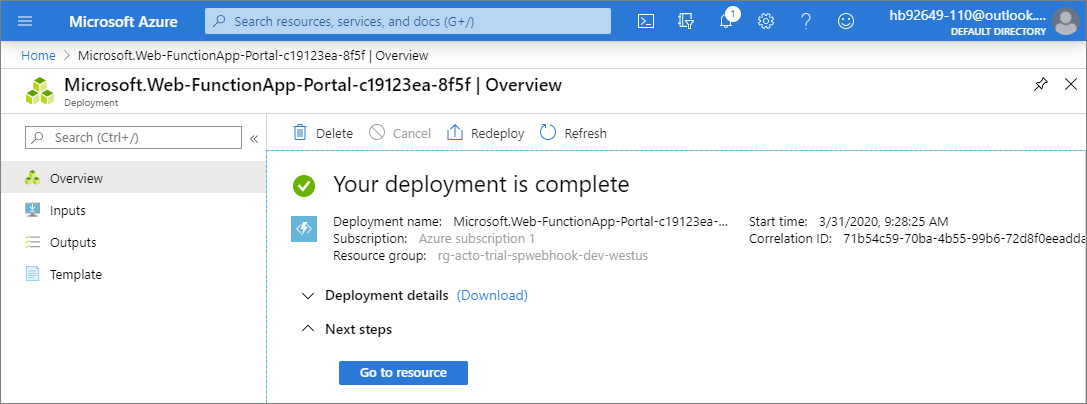
Create an Azure Function
Now that the app to host the functions is ready, you can continue with creating your first Azure Function by clicking the New function link.
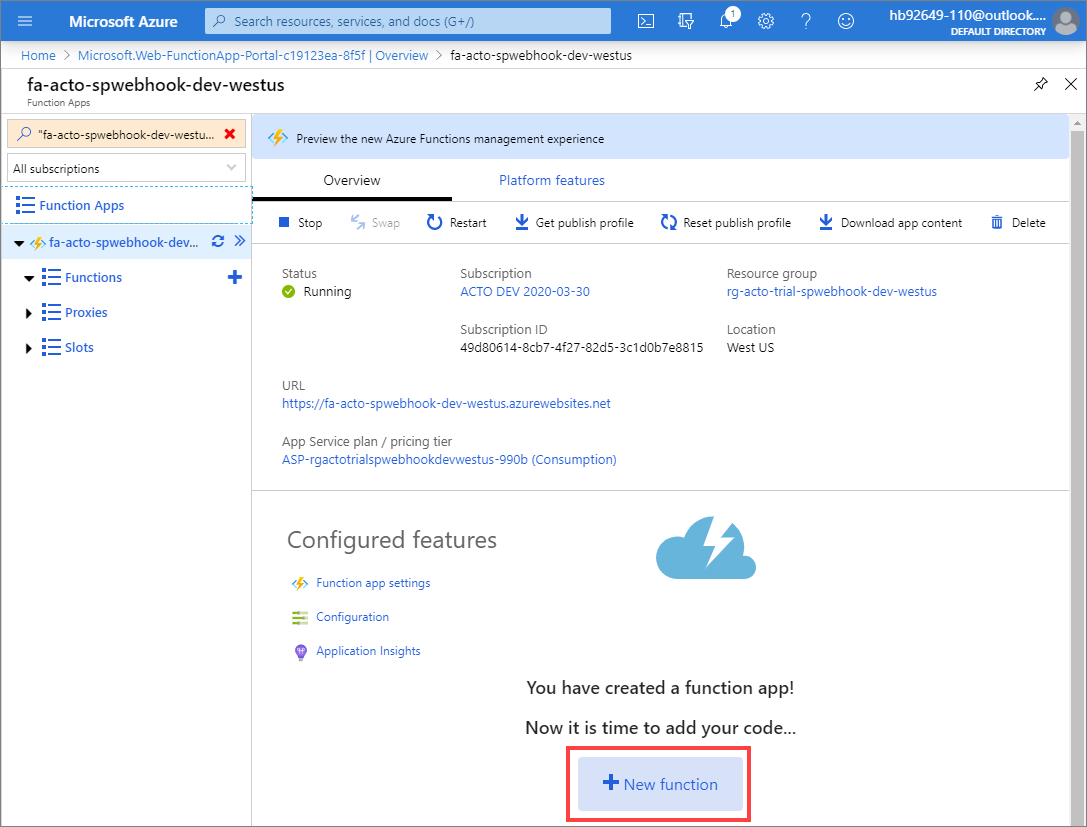
This offers you to start your function from a template; for SharePoint webhooks, we need an HTTP triggered function, and because we're writing C# code in our sample, this means we're using the HttpTrigger-CSharp function template.
Select the In-portal development environment option then click Continue.
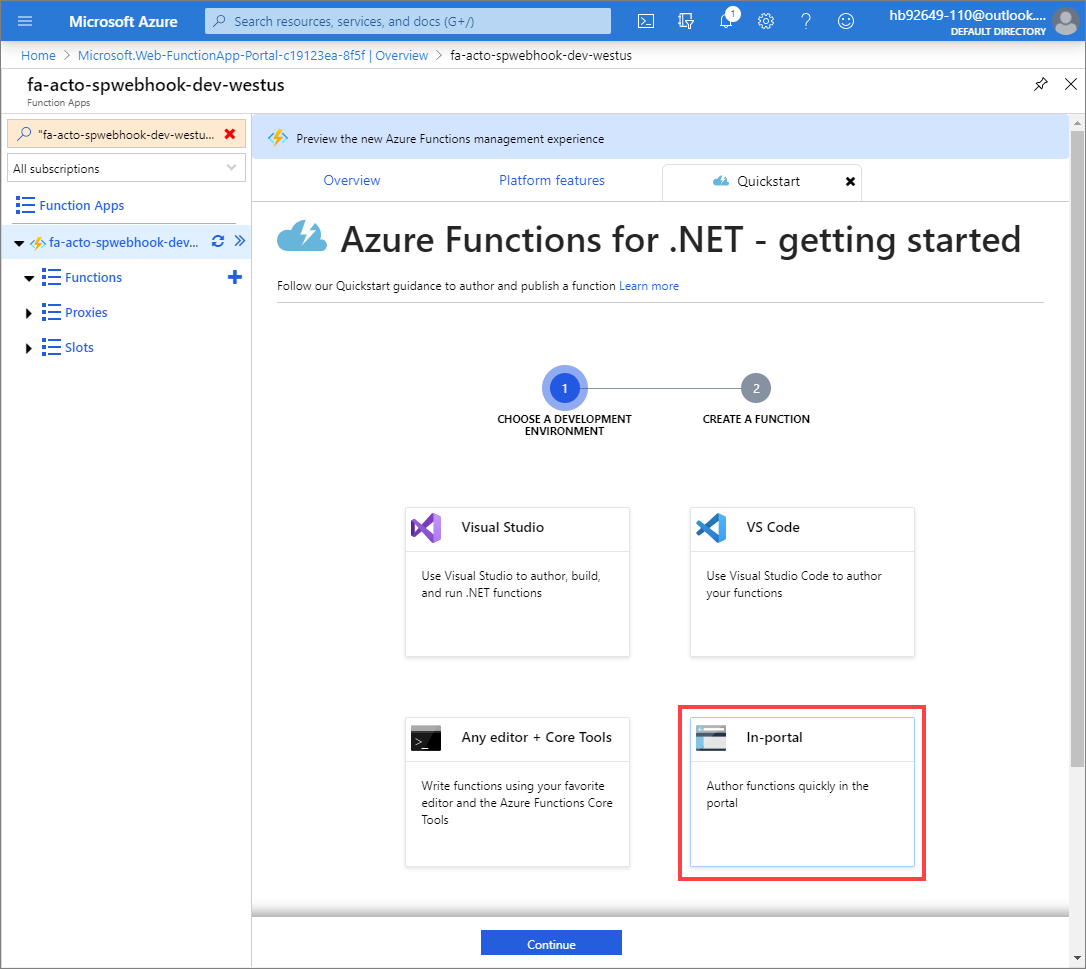
Select Webhook + API trigger type then click Create.

The result is a "default" Azure Function written in C#.

In our case, we want this Azure Function to behave as a SharePoint webhook service, so we need to implement the following in C#:
- Return the validationtoken if specified as a URL parameter to the call. This is needed as described at Create a new subscription, and SharePoint expects the reply to happen within 5 seconds.
- Process the JSON webhook notification. In the following sample, we've opted to store the JSON in a storage queue so that an Azure Web Job can pick it up and process it asynchronously.
- Depending on your needs, you could also process the notification directly in your webhook service, but keep in mind that all webhook service calls need to complete in 5 seconds; so using an asynchronous model is recommended.
You can achieve this by replacing the default code with the following code:
#r "Newtonsoft.Json"
using System.Net;
using Microsoft.AspNetCore.Mvc;
using Microsoft.Extensions.Primitives;
using Newtonsoft.Json;
public static async Task<IActionResult> Run(HttpRequest req,
ICollector<string> outputQueueItem, ILogger log)
{
log.LogInformation($"Webhook was triggered!");
// Grab the validationToken URL parameter
string validationToken = req.Query["validationtoken"];
// If a validation token is present, we need to respond within 5 seconds by
// returning the given validation token. This only happens when a new
// webhook is being added
if (validationToken != null)
{
log.LogInformation($"Validation token {validationToken} received");
return (ActionResult)new OkObjectResult(validationToken);
}
log.LogInformation($"SharePoint triggered our webhook...great :-)");
var content = await new StreamReader(req.Body).ReadToEndAsync();
log.LogInformation($"Received following payload: {content}");
var notifications = JsonConvert.DeserializeObject<ResponseModel<NotificationModel>>(content).Value;
log.LogInformation($"Found {notifications.Count} notifications");
if (notifications.Count > 0)
{
log.LogInformation($"Processing notifications...");
foreach(var notification in notifications)
{
// add message to the queue
string message = JsonConvert.SerializeObject(notification);
log.LogInformation($"Before adding a message to the queue. Message content: {message}");
outputQueueItem.Add(message);
log.LogInformation($"Message added :-)");
}
}
// if we get here we assume the request was well received
return (ActionResult)new OkObjectResult($"Added to queue");
}
// supporting classes
public class ResponseModel<T>
{
[JsonProperty(PropertyName = "value")]
public List<T> Value { get; set; }
}
public class NotificationModel
{
[JsonProperty(PropertyName = "subscriptionId")]
public string SubscriptionId { get; set; }
[JsonProperty(PropertyName = "clientState")]
public string ClientState { get; set; }
[JsonProperty(PropertyName = "expirationDateTime")]
public DateTime ExpirationDateTime { get; set; }
[JsonProperty(PropertyName = "resource")]
public string Resource { get; set; }
[JsonProperty(PropertyName = "tenantId")]
public string TenantId { get; set; }
[JsonProperty(PropertyName = "siteUrl")]
public string SiteUrl { get; set; }
[JsonProperty(PropertyName = "webId")]
public string WebId { get; set; }
}
public class SubscriptionModel
{
[JsonProperty(NullValueHandling = NullValueHandling.Ignore)]
public string Id { get; set; }
[JsonProperty(PropertyName = "clientState", NullValueHandling = NullValueHandling.Ignore)]
public string ClientState { get; set; }
[JsonProperty(PropertyName = "expirationDateTime")]
public DateTime ExpirationDateTime { get; set; }
[JsonProperty(PropertyName = "notificationUrl")]
public string NotificationUrl {get;set;}
[JsonProperty(PropertyName = "resource", NullValueHandling = NullValueHandling.Ignore)]
public string Resource { get; set; }
}
Configure your Azure Function
Because we've chosen the correct template to start from, our configuration is almost complete. The only thing you still need to do is to configure the Azure Queue Storage as an Output binding so that we can add messages to the queue as they come in.
Select Integrate and then New Output to add the output binding.
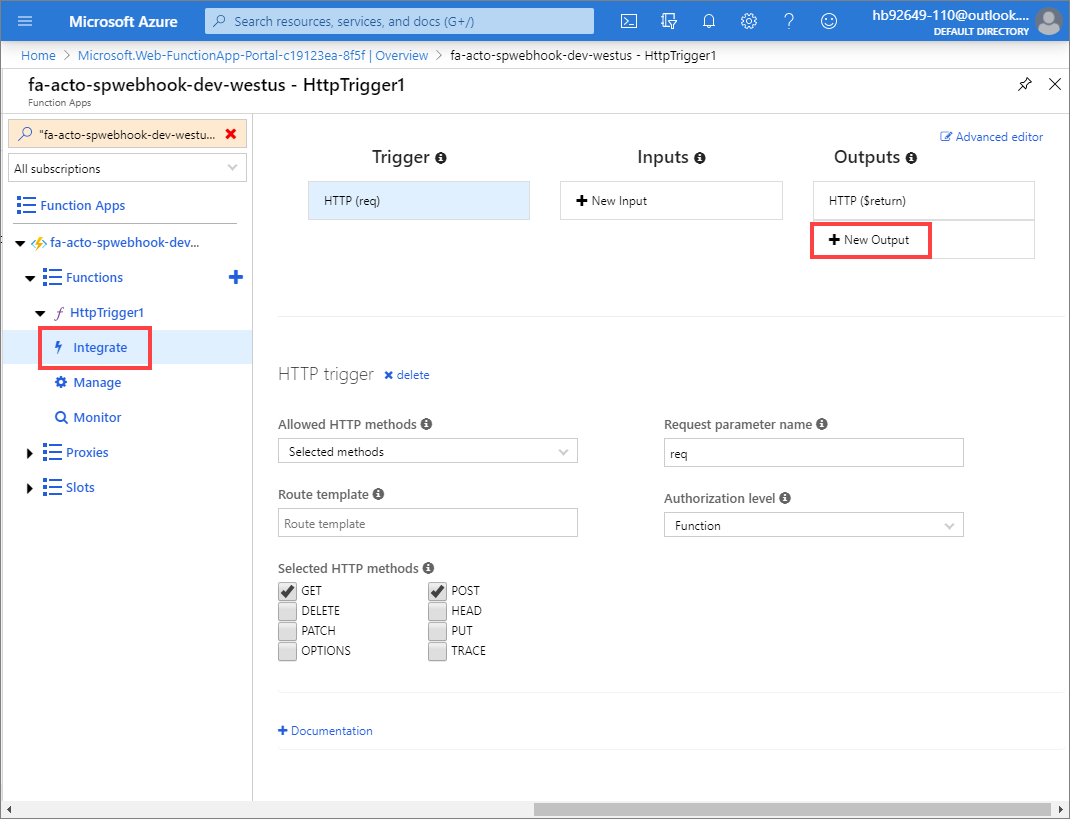
Select Azure Queue Storage as the binding type and then click Select.

Click Save.
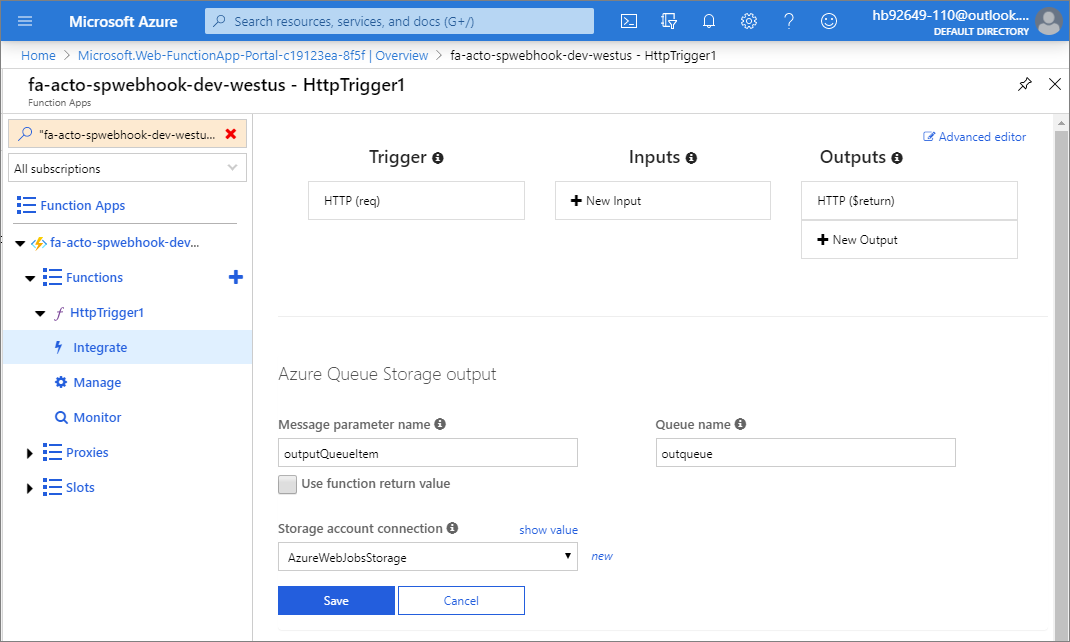
Test your Azure Function (Validation Token Test)
You're now all set for your first Azure Function test.
Navigate back to the code screen by clicking on the name of the function HttpTrigger1 in the navigation panel. Then click the Test tab to open the test panel on the right.
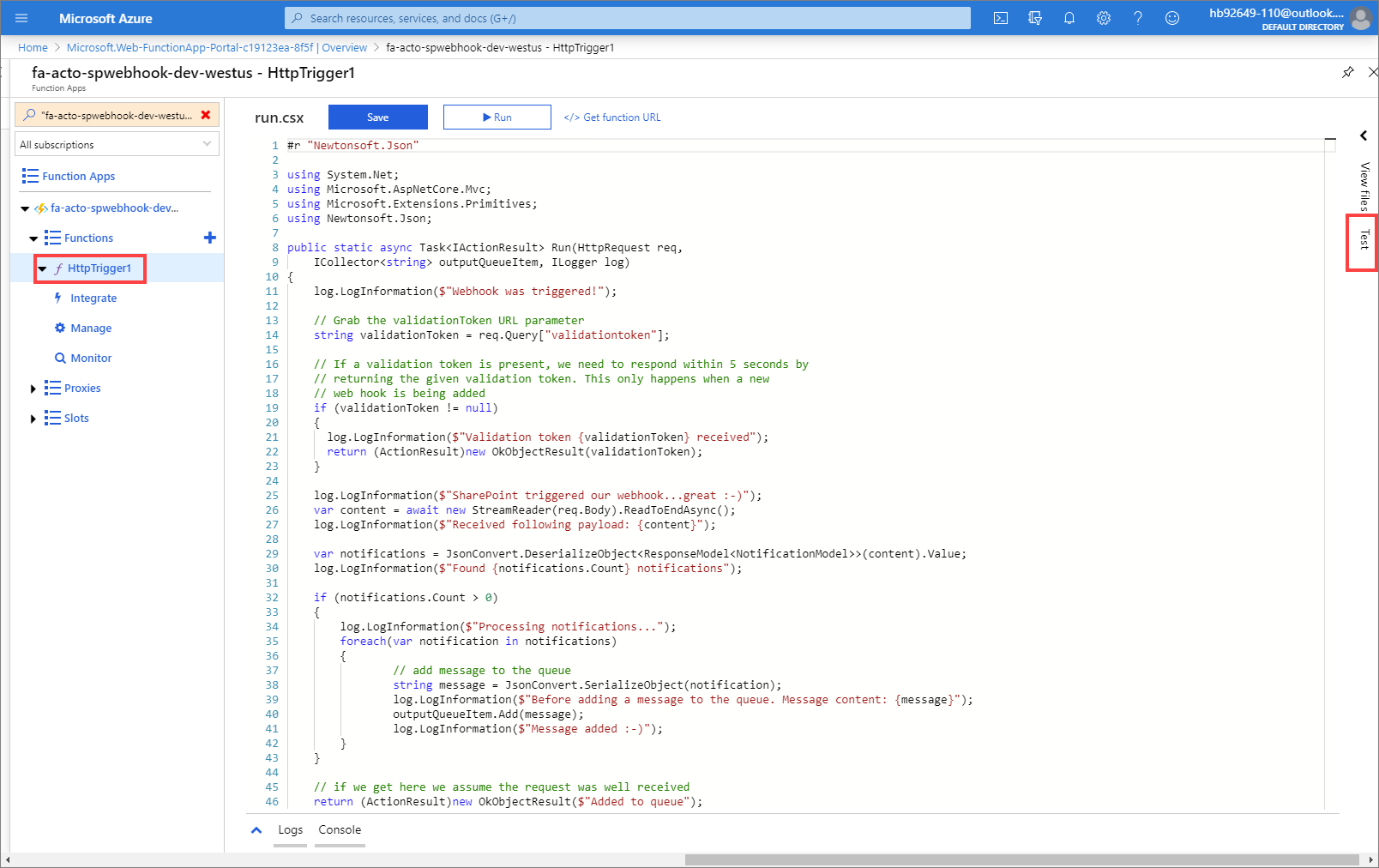
Add a URL parameter validationtoken with a random string as value.
Using this setup, we're mimicking the behavior of SharePoint by calling your webhook service when validating a new webhook addition.
Click Run to test...
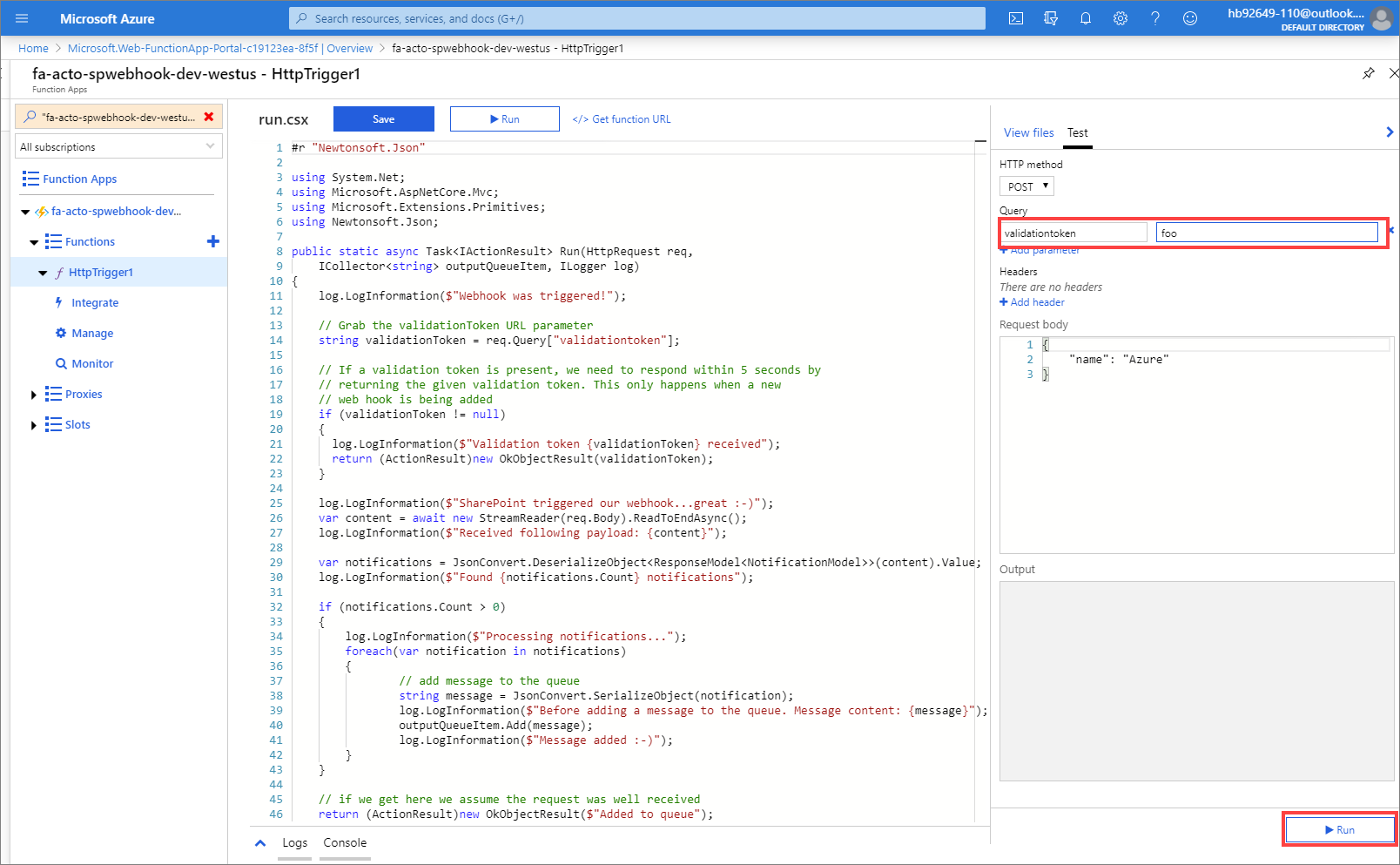
If everything goes well, you'll see in the logs section that your service was called and that it returned the passed value with an HTTP 200 response.

Test your Azure Function (SharePoint List Event Test)
Now for the second test. This will test your function as if it was called by a SharePoint list event.
- In the Test panel, clear the validationtoken URL parameter and replace the Request body with the following JSON object. Then click Run.
{
"value": [{
"subscriptionId":"1111111111-3ef7-4917-ada1-xxxxxxxxxxxxx",
"clientState":null,
"expirationDateTime":"2020-06-14T16:22:51.2160000Z","resource":"xxxxxx-c0ba-4063-a078-xxxxxxxxx","tenantId":"4e2a1952-1ed1-4da3-85a6-xxxxxxxxxx",
"siteUrl":"/sites/webhooktest",
"webId":"xxxxx-3a7c-417b-964e-39f421c55d59"
}]
}
If everything is OK, you should see all the log messages including the one that indicates that the message was added to the queue.
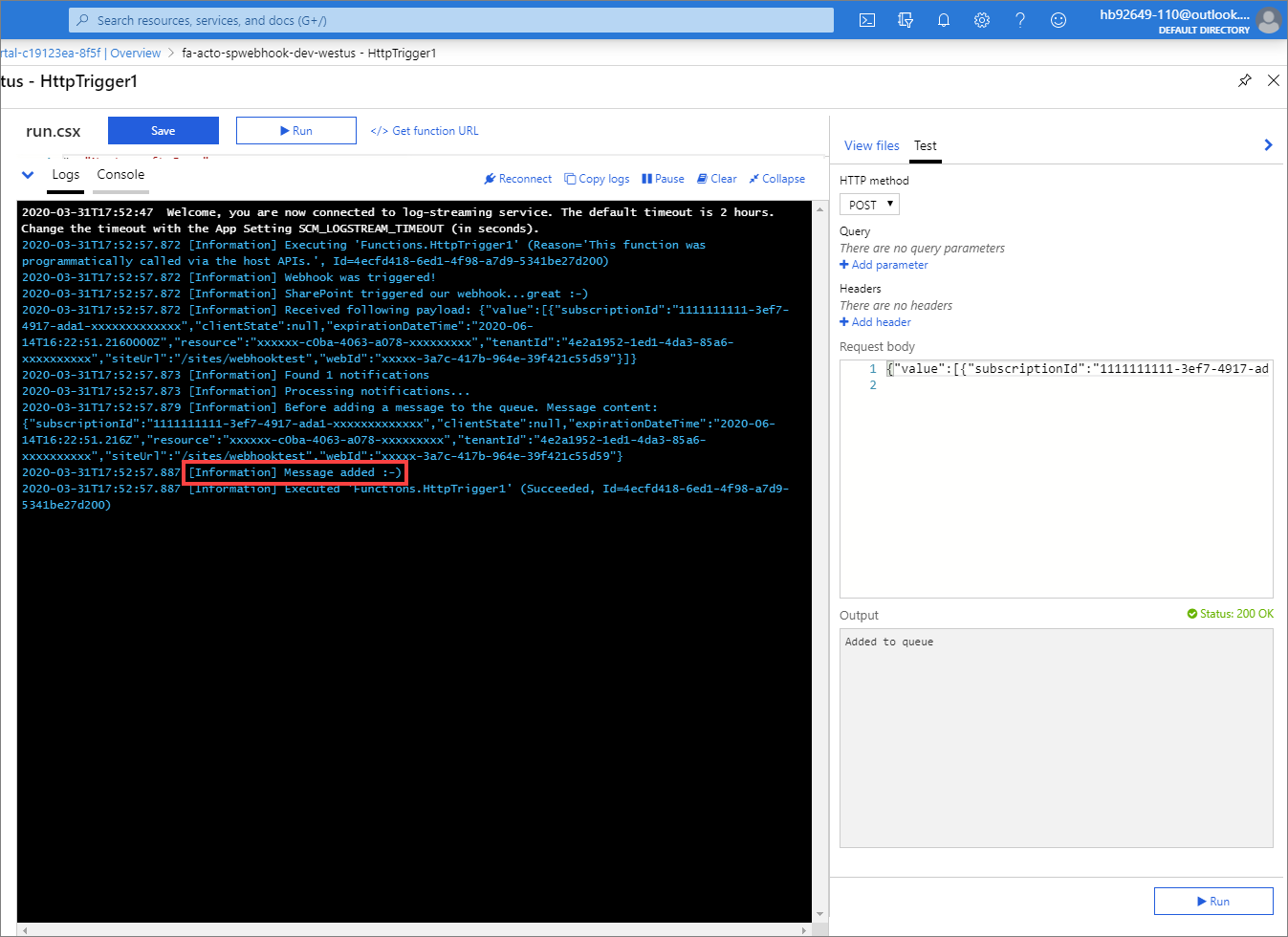
Grab the webhook URL to use in your implementation
We'll need to let SharePoint know what webhook URL we're using. To do so, let's start by copying the Azure Function URL.
Click Get function URL.
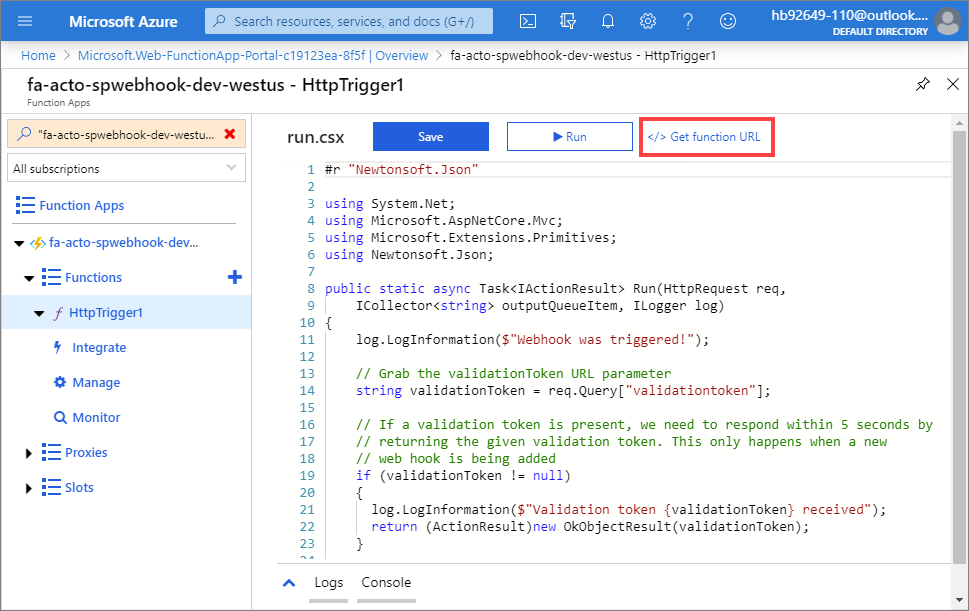
Click Copy to copy the Azure Function App URL to your clipboard.

So in our case the webhook URL to use is the following:
https://fa-acto-spwebhook-dev-westus.azurewebsites.net/api/HttpTrigger1?code=LTFbMHrbVVQkhbL2xUplGRmY5XnAI9q/E4s5jvfeIh00KsF9Y7QsJw==
See also
Feedback
Coming soon: Throughout 2024 we will be phasing out GitHub Issues as the feedback mechanism for content and replacing it with a new feedback system. For more information see: https://aka.ms/ContentUserFeedback.
Submit and view feedback for